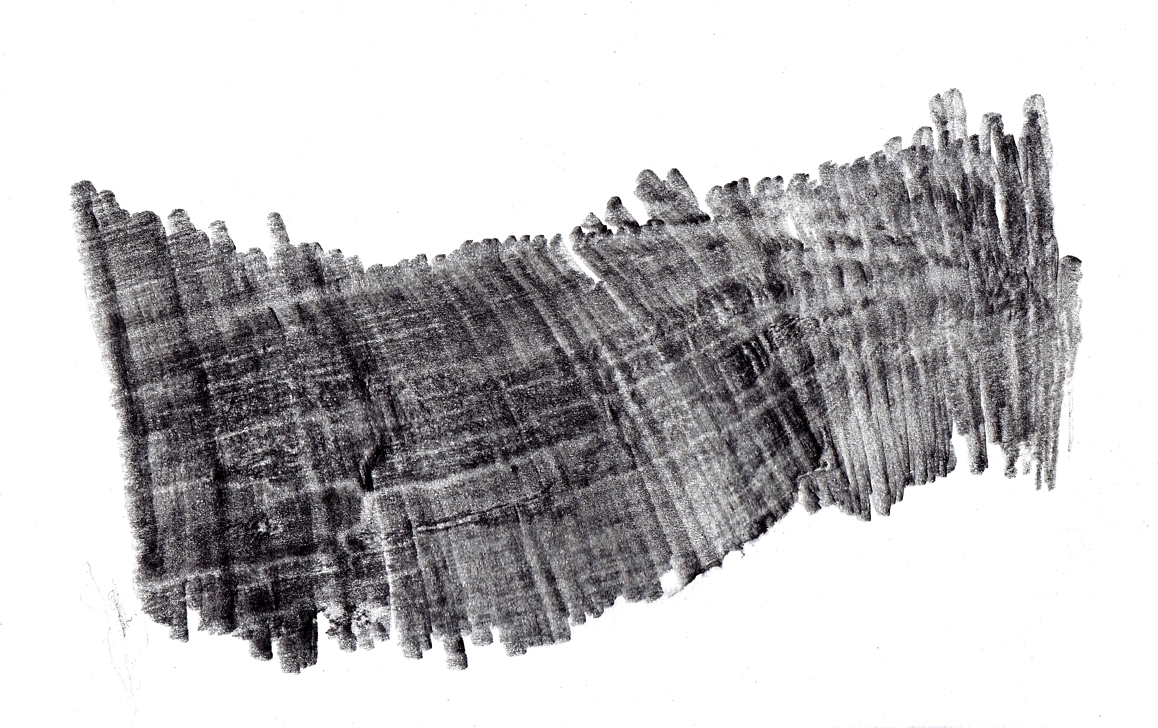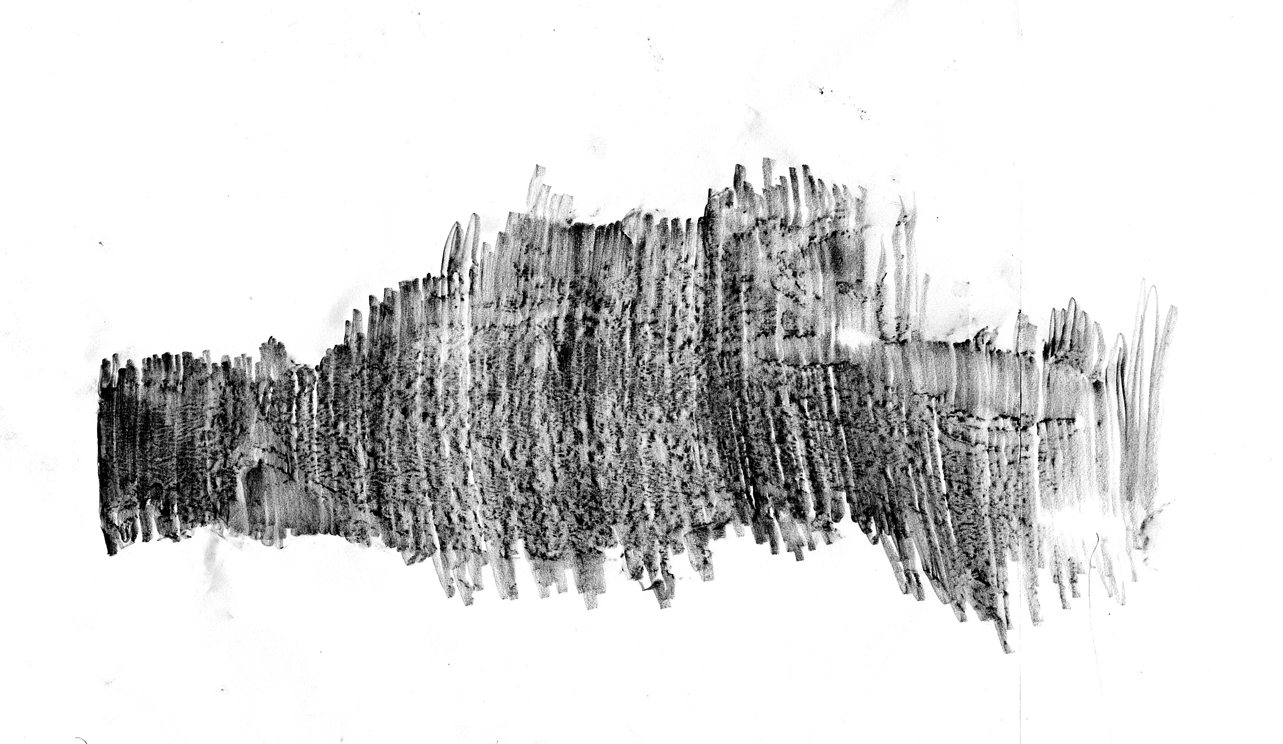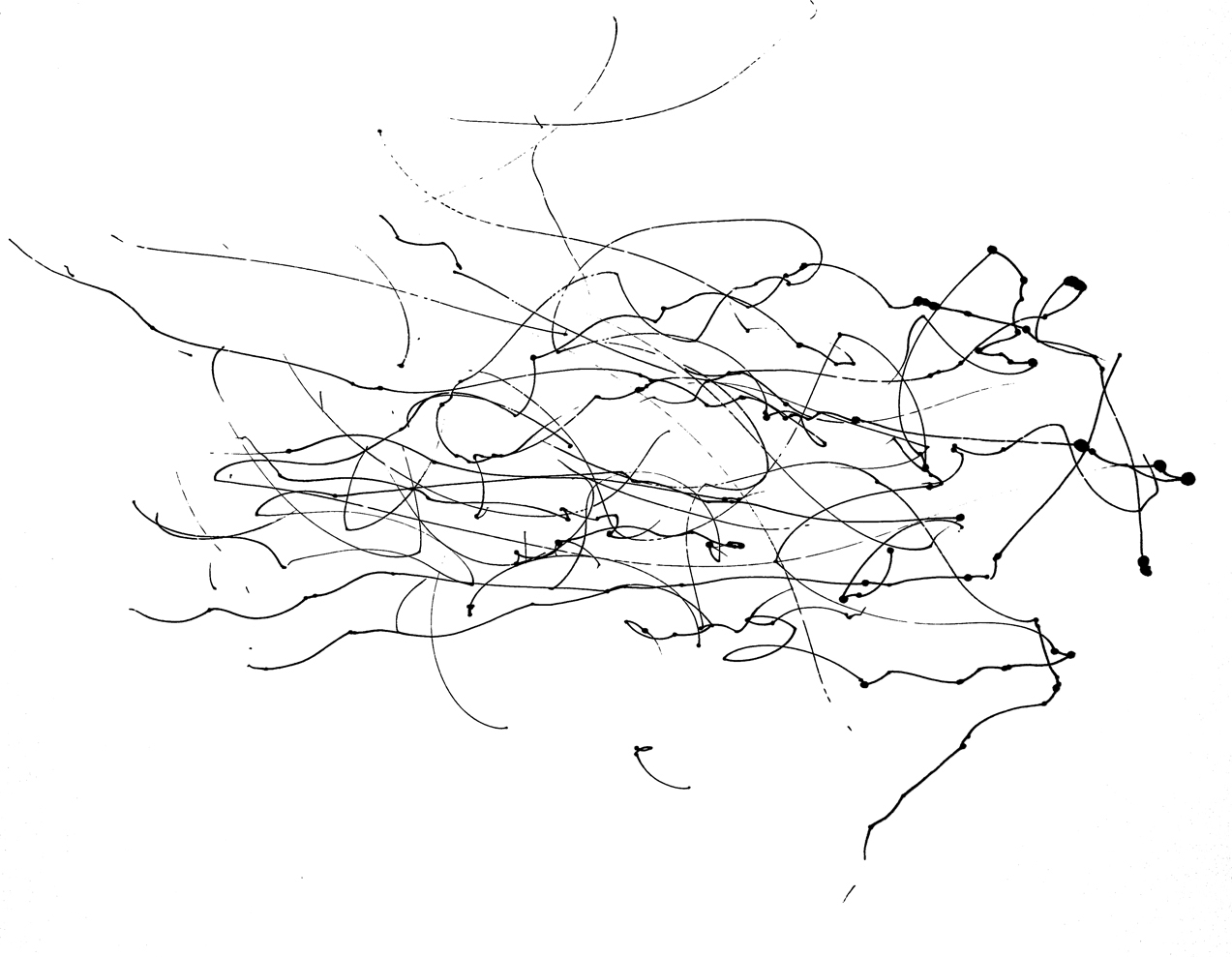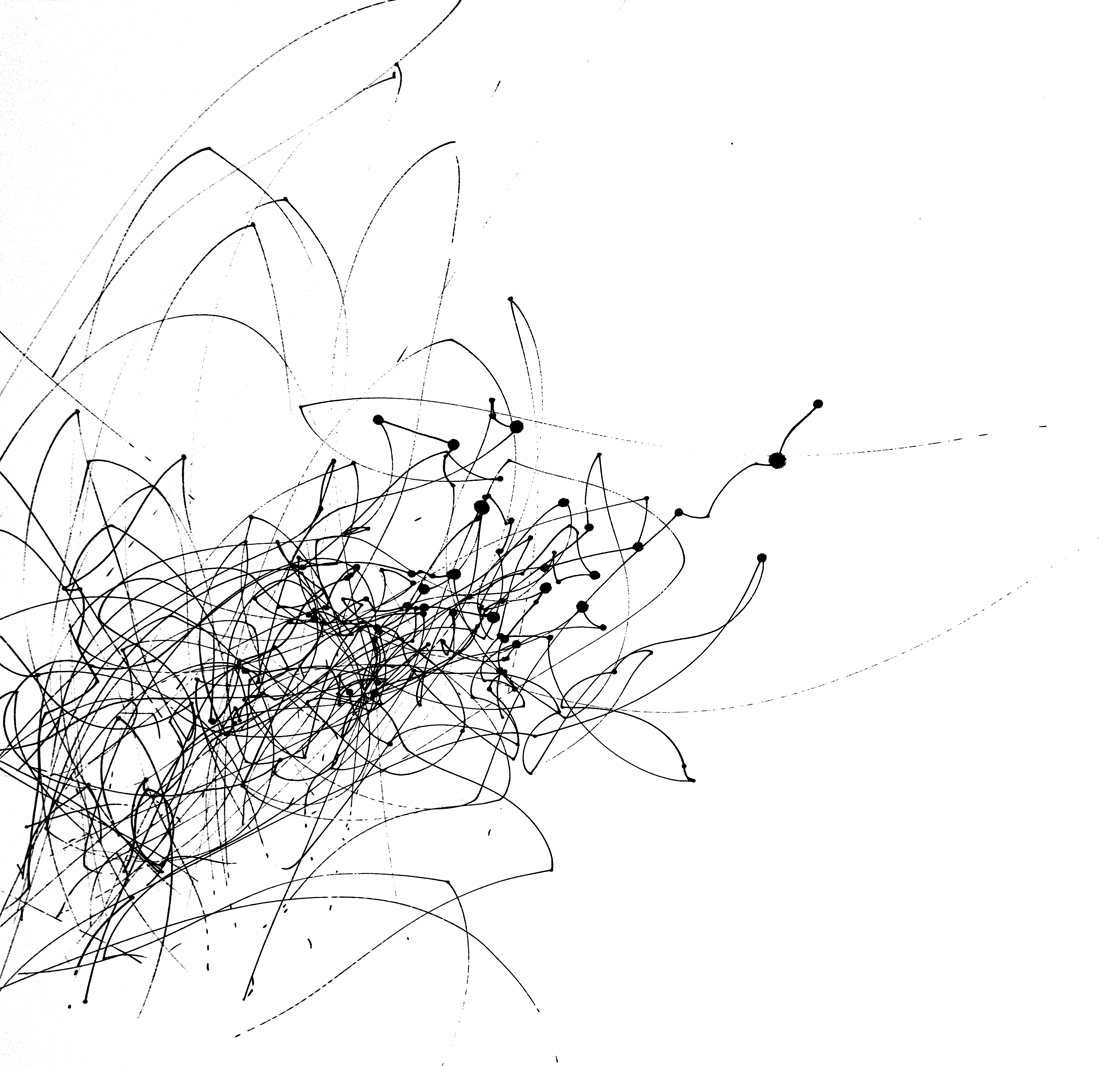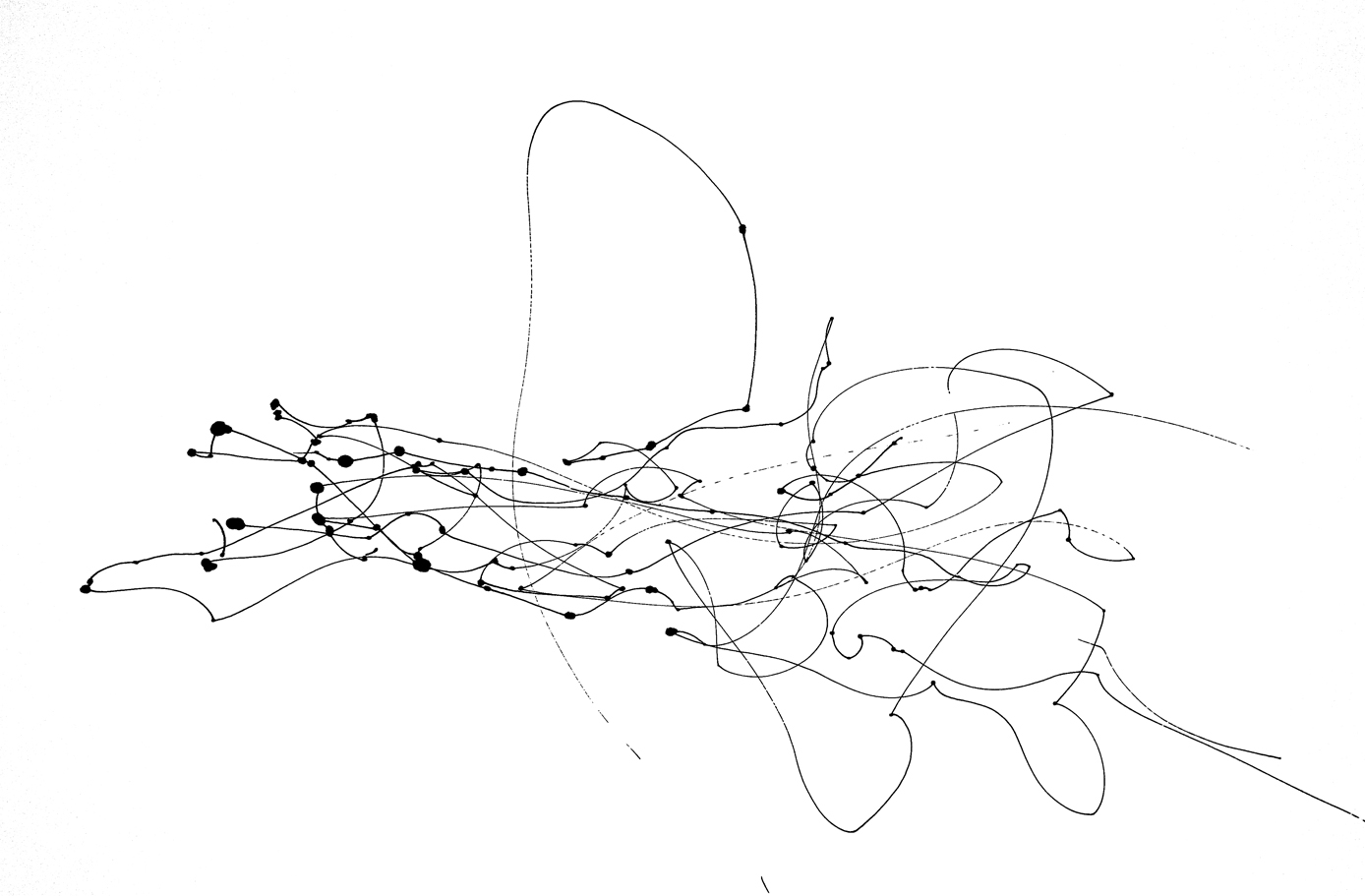Notes on the Sign of Poetry
Journal excerpts + Image Gallery
by Sacha Archer
Words fall away and the landscape comes through. The landscape is the final word.
***
Here we cannot read (or cannot continue reading as we have read). Here, listen, listen to the texture of presence. Here is the pastoral, the eclogue, the romantic, the concrete.
***
So much poetry today is the equivalent of landscape painting. I am thinking of those works that hung in my own home when I was a boy and which it is not uncommon to find filling space on the walls of so many houses. Landscapes by the disappeared that are unremarkable.
***
Ghost-writing, here, is the absence of text, but not of writing.
***
Leaning against the trunk, lifting the page… The sheets wrap the trees, death shrouds. They bandage stumps, if only momentarily.
***
I am struck by the return of paper to its origin. It records itself. It becomes exclusively about materiality. No, not exclusively. In the return it is impossible to ignore the pathos of that contact, that touching. It is a tragic gesture. Between itself and itself no words are possible. Speechless but for the visual record of scraping. The articulation of remembering… and longing. And yes, my own reach into and against what distant wood where I once wandered—and began, unsuspecting, my decent into poetry?
***
Our ancestors observed the records of the Earth, its writings. The rings of trees, the carvings of rivers, and the stamped paths of their own passages… the war story qua battle scar, one’s autobiography in the hallucinatory loop of progeny… the birds’ vernacular of freedom, flight unburdened by nomenclature… pools making an argument for the stars, a reflective dissertation… the writing of the stars themselves in constellations…
***
I had begun to make longer rubbings spanning the trunks of trees. They showed themselves as calligraphic hanging scrolls, or those famed Chinese landscapes that do not end.
***
When considering Asian calligraphy, the character is an excuse for a narrative of lines. When it is a single character the meaning is secondary, or altogether ignored. When it is a poem or an excerpt it is an established classic, a net for the trapeze work of the brush, the acrobatics of the tip, the dance through air. One does not focus on the net—one forgets that it is there.
And then the net is removed. There can be no mistake—but preferences! The stars do not have meaning—they are the birth of meaning. The lines of constellations are imagined, imposed, documented, real.
All fiction is the imagination made real. Alien abductions for the abductees, the annual sojourn of Saint Nicholas for children, the binding (and sanctity) of marriage vows for the bride and groom, virgins awaiting martyrs in paradise for suicide bombers (whose very martyrdom is a fiction which propels them). These events and situations occur and continue to occur—are actual between believers—surge through the body as the force of conviction. Events, yes, and figures: Huckleberry Finn, Wonder Woman, Lucy Ricardo, Jesus in the aether (with whom one can talk telepathically) and his mother who, also dead, can answer prayers through the same telepathy. But, they are each more real than they who have lived, died, and are now and forever forgotten. Fictional personalities? They have entered far more lives, each of these presences actually walks, talks, and effects an impact.
Is it a fiction that a tree writes a narrative of lines? If it is, it soon outgrows itself. Fiction loses its meaning. Because it is transformative. It transforms itself into the real.
Consider poetry. Enter a library and find poetry categorized under non-fiction, regardless of its content. It is too close to the body to be anything less than an extension of it.
***
In his Sentences on Conceptual Art, Sol Le Witt wrote that “Conceptual artists are mystics rather than rationalists. They leap to conclusions that logic cannot reach.” From that vantage it is clear that my investigations into this body of work empty, dew from the palm of the field. The centre cannot be located. There must be faith in the light of the unbroken reach.
***
Faith in the trajectory of desire. Faith in the intent of genesis.
***
Gesticulating hello!, come here, stop!, quiet!, left, right, and from there into the labyrinth of all language… When body language opened into sign language, a language of the body... was given airs! Did the written predate the spoken? What is sign language if not the written in air?
***
It is taken for granted, the coupling of the written with the spoken. I look back and see primitive humans munching on early language… and the written word hides on the surface of the skin.
The written word is not inherent in the spoken. But, now they have been married so long we feel that they resemble each other. They cannot be separated—it is unimaginable!
***
Were the birds
oracles read
writing? In air,
our body
language, writing
too?
***
I find myself flying a kite. It mirrors the tree sketches, but while those sketches go on without me, at the other end of the kite it is instead myself that is the medium and the thing sketched by that medium. Once the kite is high enough and has caught itself in an air current, has, in essence, locked itself in the sky, I am then connected to the firmament (which is itself an idea) ready to receive dreams and knowledge, the transmissions of clouds, of the sun, of the ghosts of gods.
***
The trees can neither write nor draw, so when they do, let’s forgo differentiation.
We already know the trees whisper.
***
We are blind and so we must imagine what is seen.
We are deaf and so we must imagine what is heard.
***
The poem includes the book as a poetic device.
***
These poems are the ritual motion of writing in contact with the original source.
***
The friction and gesture of writing. Collecting rubbings in the woods, then, later, erasing a text in a room: the body, irrespective of materials or intent, is mirrored.
***
Erasure texts have been published throughout the years, identified as writing due to the fact that text remains and reads anew. And the erasure text where no text remains? It remains text-based. It is the absence of a text which is the point, and the act by which it was erased. The act of writing. The gesture towards leap. The junction of theory and practice. And where one arrives. And where one departs and moves towards.
***
I ride a loop.
The rubbings seemed to be a different form of, but which embodied the same spirit as, the Prelude. It was that poem (partially read), the memory of that poem (partially read), which suggested the pursuit of rubbings, and more importantly, those rubbings as writing.
I conceived of a project, this project, entitled Postlude, which suggested to me, not an ending, but a legacy, an after, a continuation. It has come to pass that that after has overlapped with before, an origin. Our ancestors’ prelude is our postlude. Which is to say, the same note has sustained.
***
It was a notion, an eroded memory of Wordsworth’s Prelude which spurred me into this work. The Prelude embodied the romantic image of the Poet in nature.
I began, having embarked on this project, to trudge through the Prelude (I had in fact begun it years earlier) but soon came to the conclusion that a reading of that work was of no direct (or indirect) relevance to the execution, understanding, or legitimacy of this work. The Prelude remains a starting point, but the reason for its position as instigator is necessarily mysterious, opaque, and unhelpful.
***
Rauschenberg’s Erased de Kooning? Viewing this work we are returned to that initial stage of writing/ drawing, that horrible moment—the blank page—and beyond that, the page which is paper. Paper, which is a product of wood, the tree… a moving backwards. A return to the woods, to the very tree it came from.
Yes—and no.
Also, we are confronted by nothing. We do not even see the page. We are confronted by nothing. And yet, not nothing. Anything but nothing! We are confronted, when, in this case we say nothing, by the knowledge that there has been an erasing. Where there is a visual nothing there is not a conceptual nothing. We are faced less with the physical evidence of the effort of erasing and more with the evidence of the will, Rauschenberg’s will to erase and present an erasing.
Robert Rauschenberg’s Erased de Kooning
***
I have often thought of categorizations (within the arts) as, not the identification of inherently different practices (mediums), but as ephemeral platforms from which one’s work may be observed.
I have often thought that by merely playing a game of musical chairs (platforms) an essential evolution could be achieved within the arts.
***
Jake Kennedy spoke of Finnegan’s Wake as an incantatory spell, a mourning song, a working-through of the death of Joyce’s daughter. I know nothing of Joyce. Oil and water, Ulysses and I. And the Wake.
One winter I paced in the garage (how cold it was!) reading the entire Wake aloud. It was beautiful and I understood next to nothing.
I have lost faith in understanding. It is non-essential.
***
There is a pervasive dependence on logic in a field that defies logic…
***
It is the industrialization and consequent standardization of everything which strikes at us and which shrivels us. I am sure it has always been this way. Not a degradation, but a maintenance of regulation.
Violence in the form of strangeness, of (ideally) deterritorialization, is the physicality of freeing—and of learning. The forgotten agenda of the true pedagogy.
***
And it is good to look back, to look forward, to look before me.
At the Early Years Centre where my wife and I would take our daughter to play and listen to stories, I observed a diagram (provided below) which outlined the stages of a child’s emergent writing. The progression displayed a development from the action of writing, the recorded gesture of intent where meaning is encased but not transmitted (it could, of course, leak through by force of gesture) to the learned conformity of a standard alphabet/ writing system.
***
In retrospect, it is no coincidence that I am pursuing these rubbings and tree sketches at the same time that I am witnessing my daughter in the process of learning how to write.
Alexie, my daughter, writes her name with chalk on our driveway.
***
I can go no further in this direction because I am already in a territory where poetry begins to forget its name.
***
Thinking of my meanderings in this project I am reminded of the surrealists’ own wanderings through head and city. André Bréton, Aragon, etc. The prominence of coincidence and its power, its relevance.
That the Prelude was mysteriously the progenitor of this project, and that it engendered the (attempted) rubbing away of that poem, and also the rubbings collected from trees; that I took up kiting as a pass time while working on the project and found my work tied up in that activity, that Alexie’s journey towards literacy and the ability to write also aligns with the tree sketches… that I had to move backwards to continue on… it is logically fluid, but a dream-logic that will not be unravelled.
***
In addition to these digital notes and drawings, we have produced a series of broadsides featuring selections from Archer's experimental visual poetry and his addendum to the work. 50 limited-edition sets of broadsides are available now from The Blasted Tree Store.
Notes on the Sign of Poetry - Addendum and Broadsides is "Out of Print" from The Blasted Tree Store.
Featured by The Blasted Tree: July 4, 2017
Sacha Archer
Contributing Author
Other works on The Blasted Tree:
Notes on the Sign of Poetry by Sacha Archer is Blasted Tree original creative nonfiction and visual poetry.
Feature Image by Sacha Archer - Cover Design by Kyle Flemmer


